Abstract
This commentary reviews the arguments for and against the use of p-values put forward in the Journal and other forums, and shows that they are all missing both a measure and concept of "evidence." The mathematics and logic of evidential theory are presented, with the log-likelihood ratio used as the measure of evidence. The profoundly different philosophy behind evidential methods (as compared to traditional ones) is presented, as well as a comparative example showing the difference between the two approaches. The reasons why we mistakenly ascribe evidential meaning to p-values and related measures are discussed. Unfamiliarity with the technology and philosophy of evidence is seen as the main reason why certain arguments about p-values persist, and why they are frequently contradictory and confusing.
Full text
PDF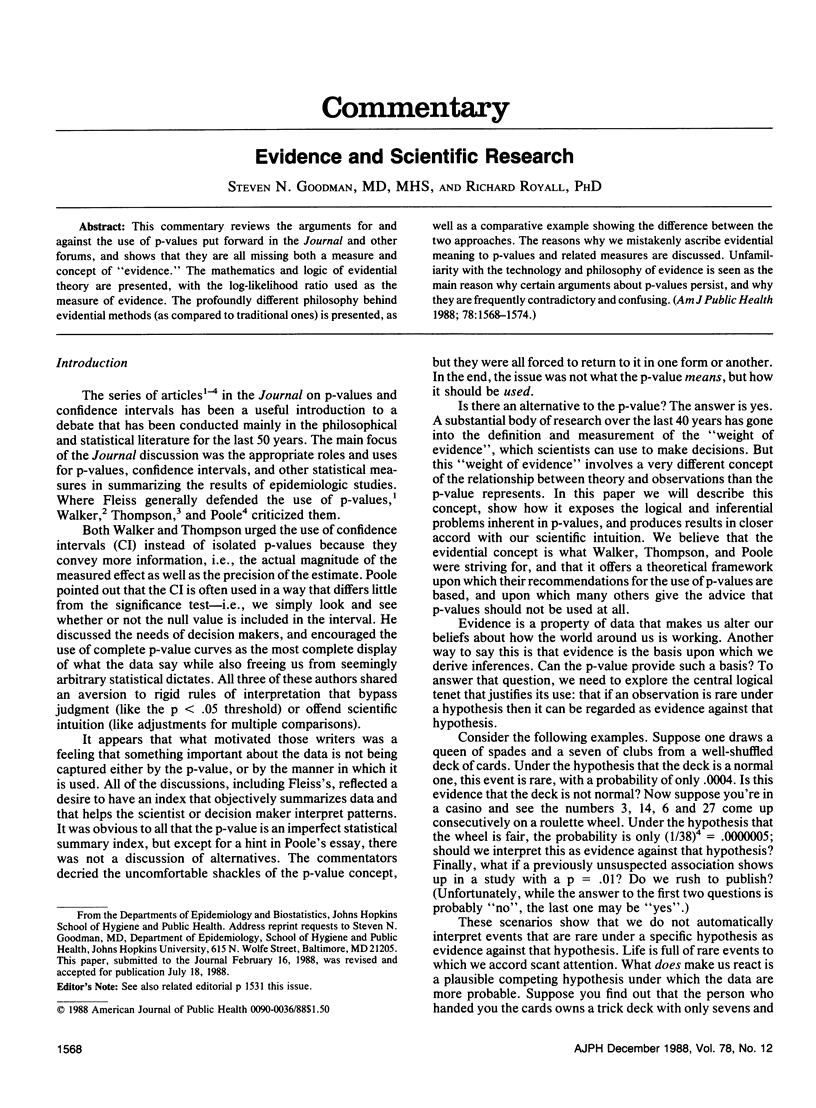
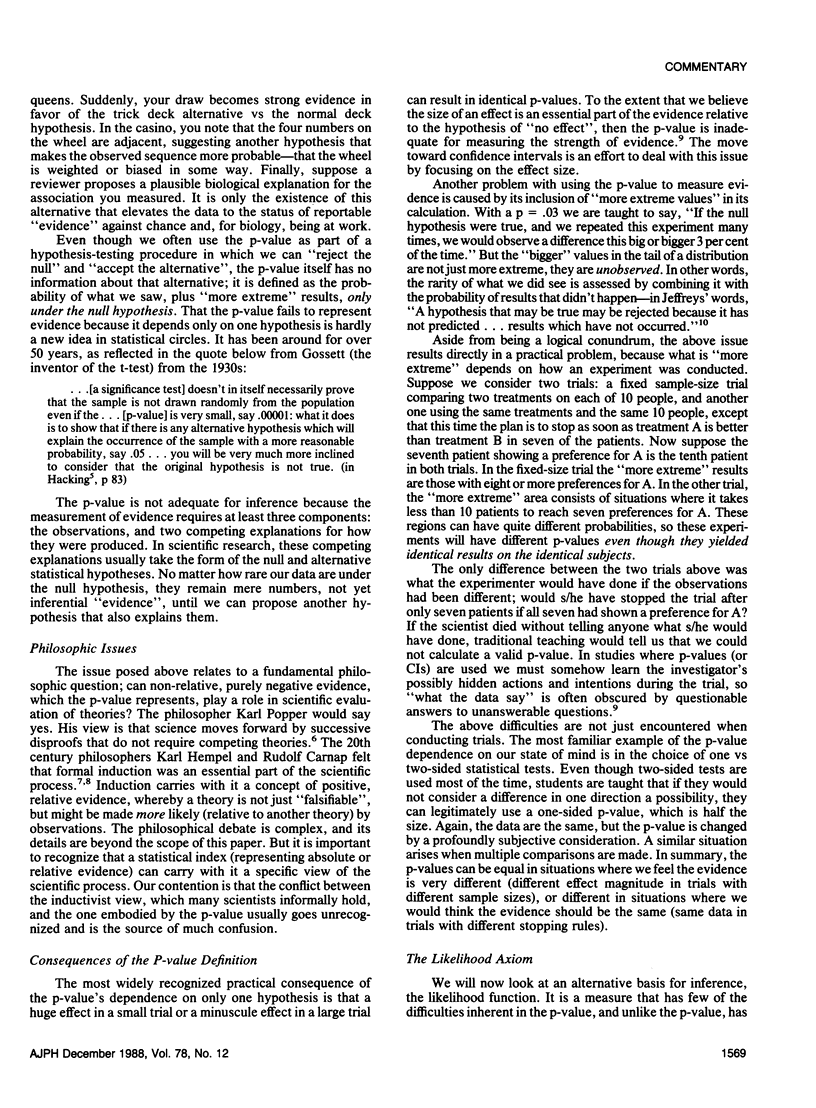
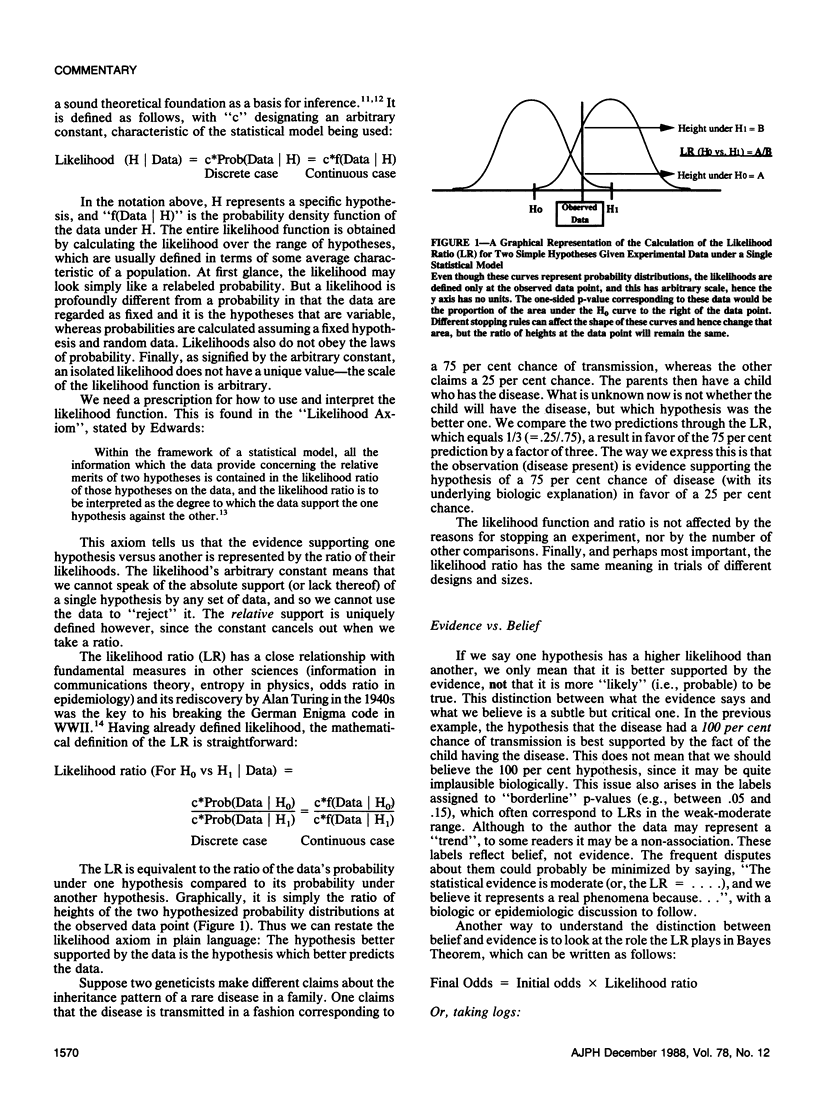
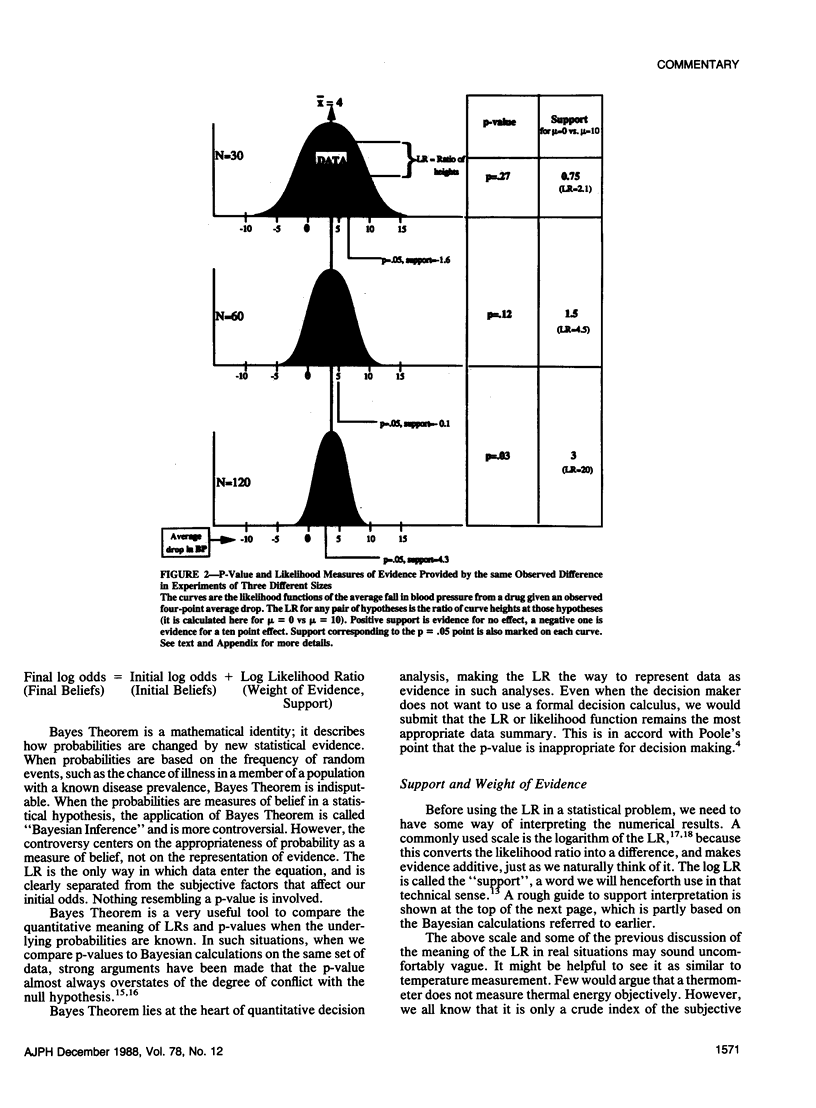
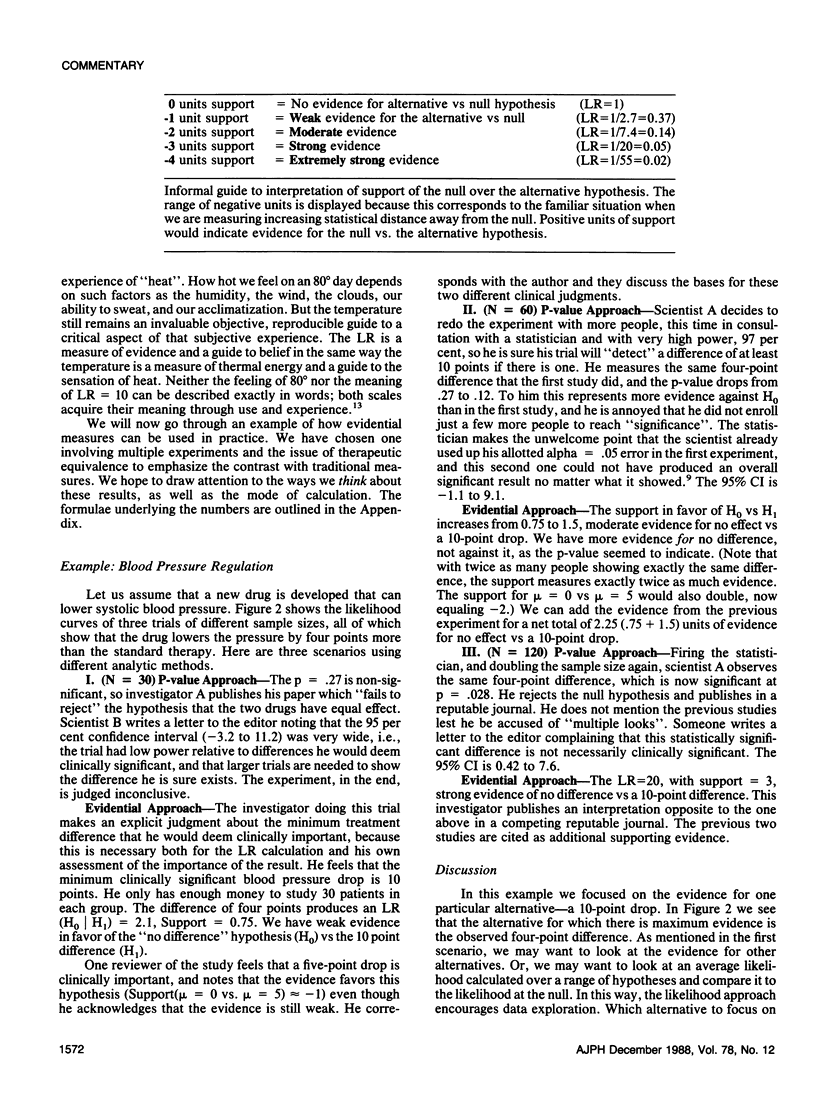
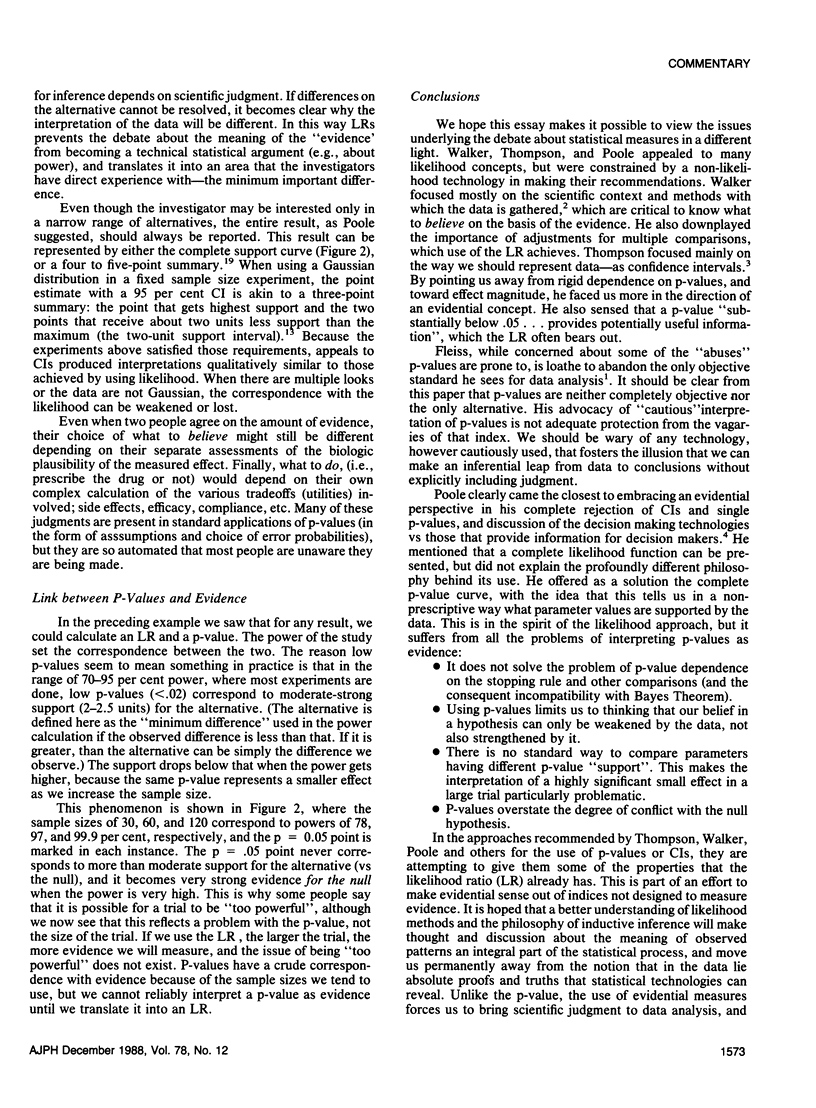
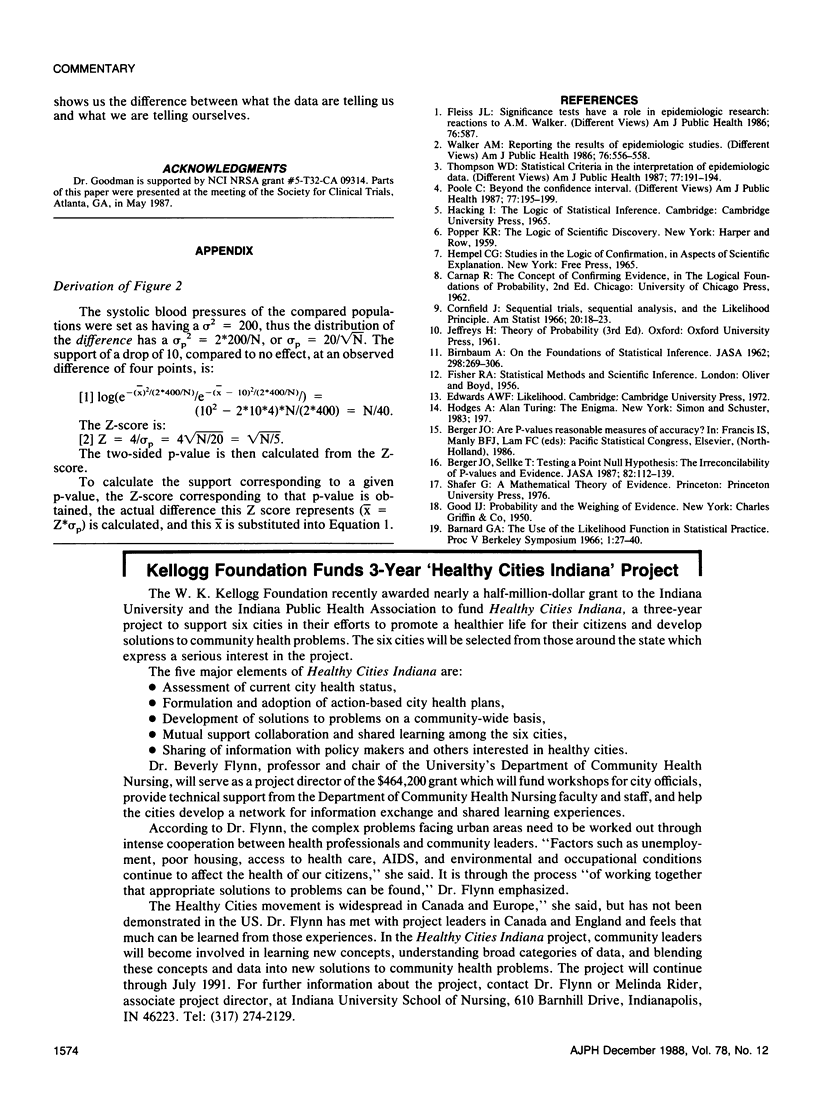
Selected References
These references are in PubMed. This may not be the complete list of references from this article.
- Poole C. Beyond the confidence interval. Am J Public Health. 1987 Feb;77(2):195–199. doi: 10.2105/ajph.77.2.195. [DOI] [PMC free article] [PubMed] [Google Scholar]
- Thompson W. D. Statistical criteria in the interpretation of epidemiologic data. Am J Public Health. 1987 Feb;77(2):191–194. doi: 10.2105/ajph.77.2.191. [DOI] [PMC free article] [PubMed] [Google Scholar]
- Walker A. M. Reporting the results of epidemiologic studies. Am J Public Health. 1986 May;76(5):556–558. doi: 10.2105/ajph.76.5.556. [DOI] [PMC free article] [PubMed] [Google Scholar]


